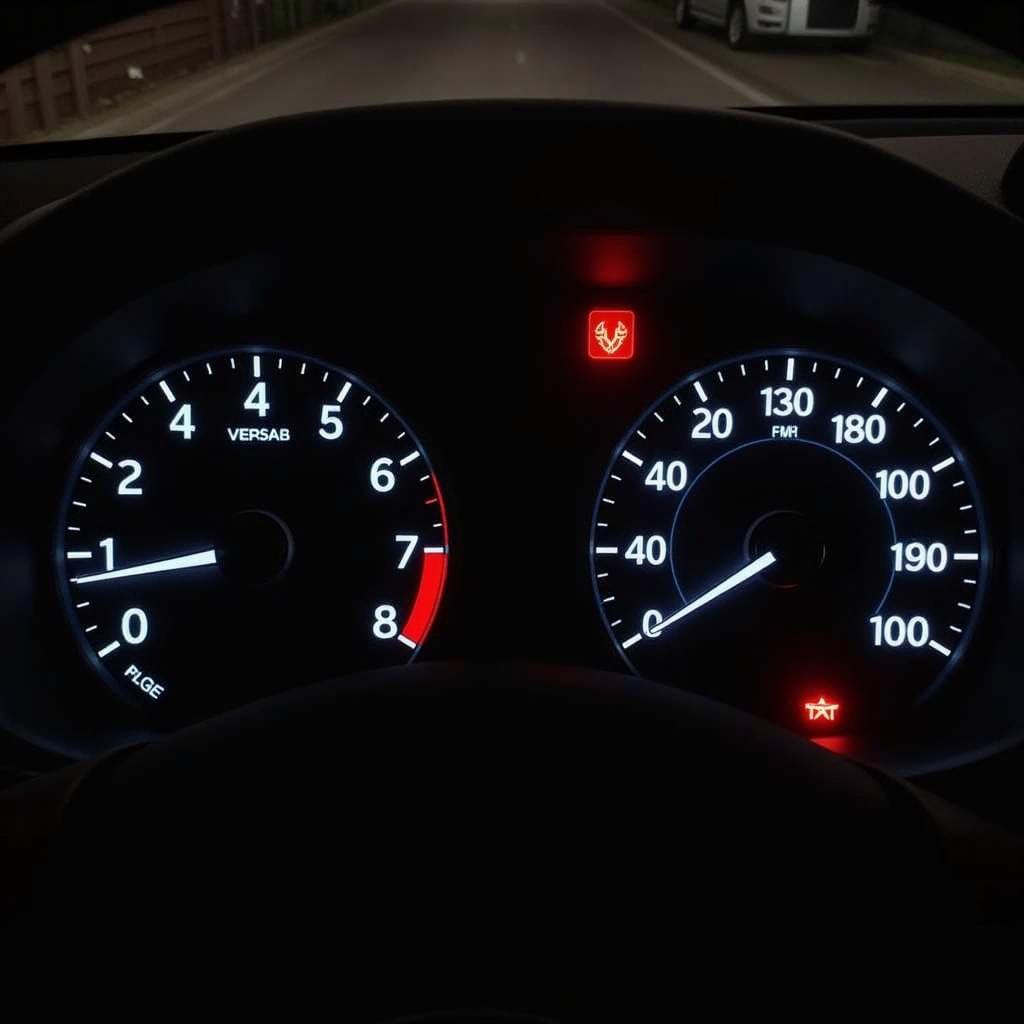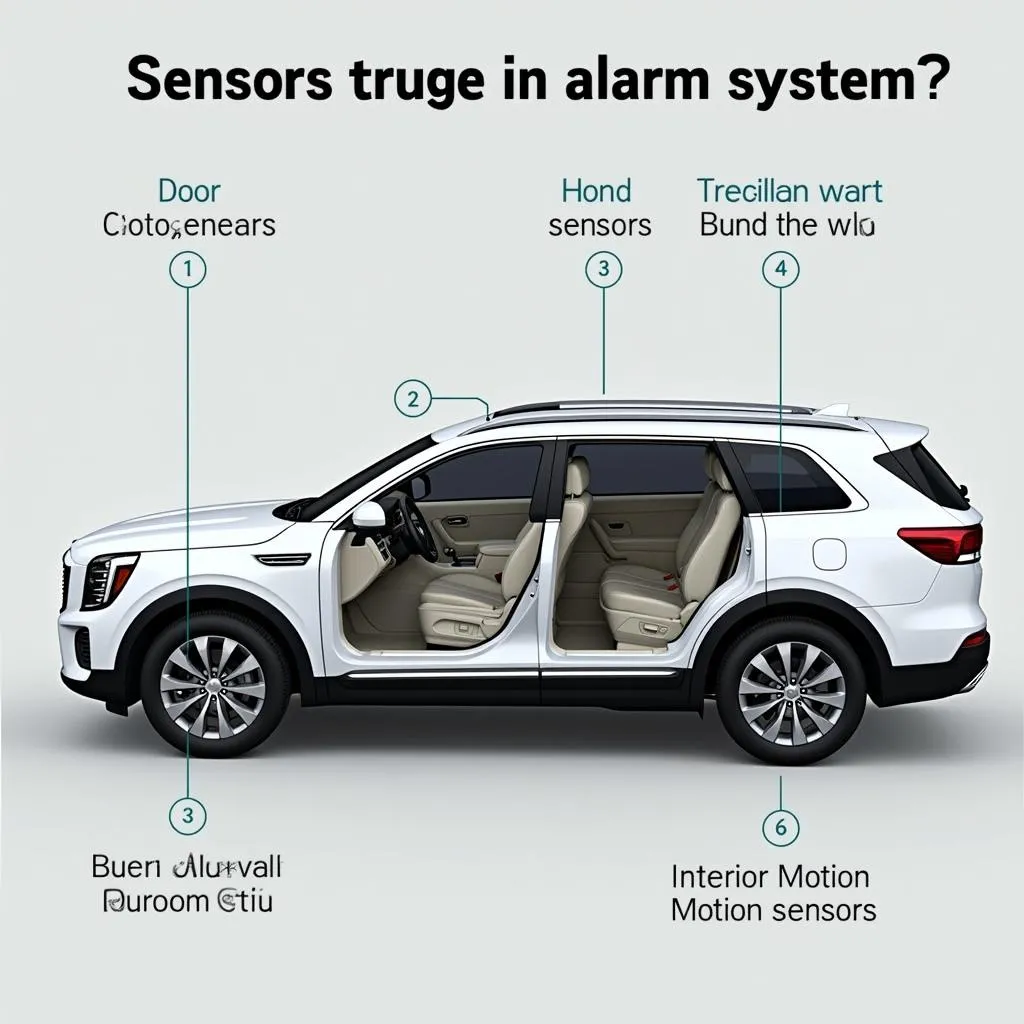The 2013 Subaru Forester brake warning light can illuminate for various reasons, ranging from a simple parking brake engagement to more serious issues like low brake fluid or worn brake pads. Understanding the possible causes and knowing how to troubleshoot them can save you time and money, and more importantly, keep you safe on the road. This article provides a comprehensive guide to help you diagnose and address the brake warning light issue in your 2013 Subaru Forester.
Understanding Your Subaru Forester’s Brake Warning Light
The brake warning light is a crucial component of your vehicle’s safety system. It serves as an immediate alert to potential problems within the braking system. In a 2013 Subaru Forester, this light can indicate several issues. Ignoring it could lead to significant safety hazards and costly repairs.
Common Causes of the Brake Warning Light
Several factors can trigger the brake warning light in your 2013 Subaru Forester. Here are the most common culprits:
- Engaged Parking Brake: The simplest and most common reason is an engaged parking brake. Always ensure it’s fully released before driving.
- Low Brake Fluid: Low brake fluid is a serious issue that can compromise your braking ability. This could indicate a leak in the brake system.
- Worn Brake Pads: Brake pads wear down over time. When they reach a critical point, a sensor triggers the warning light.
- Faulty Brake Light Switch: This switch activates the brake lights when you press the brake pedal. A malfunctioning switch can also trigger the warning light.
- ABS Issues: Problems with the Anti-lock Braking System (ABS), such as a faulty sensor, can illuminate the brake warning light along with the ABS warning light.
 2013 Subaru Forester Brake Warning Light on Dashboard
2013 Subaru Forester Brake Warning Light on Dashboard
Troubleshooting the Brake Warning Light
Before rushing to a mechanic, you can perform some basic checks to pinpoint the cause of the illuminated brake warning light.
- Check the Parking Brake: Ensure the parking brake is fully disengaged. This often resolves the issue.
- Inspect the Brake Fluid Level: Locate the brake fluid reservoir under the hood and check the fluid level. It should be between the minimum and maximum marks.
- Visually Inspect Brake Pads: If you’re comfortable doing so, check the brake pads through the wheel spokes. Thin pads indicate the need for replacement.
When to Seek Professional Help
If the simple checks don’t resolve the issue, or if you notice any leaks or unusual noises, it’s crucial to consult a qualified mechanic. A professional diagnosis can accurately identify the problem and ensure the correct repairs are performed.
“Ignoring the brake warning light can lead to severe safety risks,” says John Smith, ASE Certified Master Technician. “It’s always best to err on the side of caution and have a professional inspect your braking system.”
Remote Diagnostics and Software Solutions
Modern technology allows for remote diagnostics and software updates, which can sometimes resolve brake warning light issues related to the vehicle’s electronic systems. This involves connecting your vehicle to specialized diagnostic software, often through the OBD-II port. A trained technician can then analyze the data and potentially identify and fix the problem remotely.
“Remote diagnostics can be a highly effective tool for diagnosing and resolving certain brake system issues, especially those related to electronic control units,” states Jane Doe, Automotive Software Engineer. “It’s a convenient and often faster alternative to traditional in-person diagnostics.”
Conclusion
The 2013 Subaru Forester brake warning light is an important safety feature that shouldn’t be ignored. Understanding the common causes and knowing how to perform basic troubleshooting can save you time and money. However, if the problem persists, seeking professional help is crucial. Addressing the issue promptly ensures your safety and the optimal performance of your vehicle.
“Regular brake system maintenance is essential for preventing future problems and ensuring the longevity of your braking system,” adds John Smith.
FAQ
-
What does the brake warning light mean? The brake warning light indicates a potential problem with your braking system, such as low brake fluid or worn brake pads.
-
Can I drive with the brake warning light on? While you might be able to drive short distances, it’s not recommended. Driving with a faulty brake system can be dangerous.
-
How much does it cost to fix the brake warning light issue? The cost varies depending on the underlying cause. It could range from a simple top-up of brake fluid to more expensive repairs like brake pad replacement.
-
How often should I check my brake fluid level? It’s recommended to check your brake fluid level at least once a month.
-
What is remote diagnostics? Remote diagnostics involves using specialized software to analyze vehicle data and identify potential problems, often without requiring physical access to the vehicle.
-
Can remote diagnostics fix all brake problems? No, remote diagnostics is primarily effective for diagnosing and addressing issues related to the vehicle’s electronic systems. Mechanical problems usually require hands-on repairs.
-
Where can I get my 2013 Subaru Forester diagnosed? You can take your vehicle to a qualified mechanic, a Subaru dealership, or a specialized automotive repair shop.

